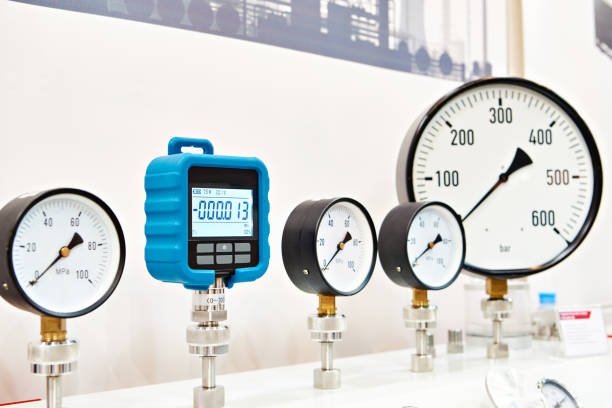This blog post examines the evolution of digital pressure gauges, essential tools in engineering and industrial innovation. It highlights their history, advantages, technological advancements, and future trends, emphasizing the importance of precision in various applications.
Introduction to Digital Pressure Gauges A Brief History
Long before digital technology took center stage, analog pressure gauges were the go-to instruments for measuring pressure in various industrial applications. These traditional devices, with their intricate mechanical parts, served industries faithfully for decades. However, as technology advanced, so did the need for more accurate, reliable, and user-friendly tools, paving the way for the advent of digital pressure gauges.
Digital pressure gauges and pressure transducers first emerged in the late 20th century, a period marked by rapid technological advancements. They promised enhanced precision, better readability, and more features compared to their analog counterparts. Engineers and technicians quickly recognized their potential, and digital gauges began to replace traditional ones in many critical applications.
The shift from analog to digital was not merely a technological upgrade; it was a paradigm shift in how measurements were perceived and utilized. Digital pressur gauges offered not just numbers but actionable data that could be easily integrated into broader digital systems. This transition signaled the onset of a new era in industrial measurement, where precision and data-driven insights became the norm.
The Advantages of Digital Gauges over Traditional Analog Gauges
The question arises why have digital pressure gauge become so popular in the engineering and industrial sectors? One of the most compelling reasons is their unparalleled accuracy. Digital gauges eliminate the mechanical complexities that often lead to inaccuracies in analog gauges. This precision is crucial in applications where even the slightest deviation can lead to significant issues.
Another advantage of digital pressure gauge is their ease of use. Unlike analog gauges, which require interpretation of needle positions, digital gauges provide clear, direct readings. This feature reduces human error and improves efficiency, particularly in fast-paced industrial environments where time is of the essence.
Additionally, digital pressure gaug often come with advanced features like data logging, wireless connectivity, and programmable outputs. These capabilities allow engineers and technicians to monitor systems remotely, analyze trends, and make informed decisions. In a world where data is king, the ability to harness and interpret this information is invaluable.
Technological Innovations Driving Digital Pressure Gauge Precision
Digital pressure gauges have not remained static; they have evolved significantly thanks to continuous technological innovations. One of the most impactful advancements has been the integration of microelectromechanical systems (MEMS) technology. MEMS sensors offer high sensitivity and accuracy, making them ideal for digital pressure gauges.
Furthermore, advancements in wireless technology have enabled remote monitoring and control of pressure gauges. Engineers can now access real-time data from anywhere, facilitating proactive maintenance and quicker response times to potential issues. This connectivity also allows for seamless integration with other digital systems, enhancing overall operational efficiency.
Artificial intelligence (AI) is another game-changer in the realm of digital pressure gauge. AI algorithms can analyze vast amounts of data to predict trends, detect anomalies, and optimize processes. This predictive capability enhances decision-making and ensures that systems run smoothly with minimal downtime.
The Future of Digital Pressure Gauges Emerging Trends and Predictions
The future of digital pressure gauge looks promising, with several emerging trends set to shape their development. One such trend is the growing emphasis on sustainability and energy efficiency. Manufacturers are focusing on creating gauges that consume less power, have a longer lifespan, and are made from eco-friendly materials.
Another exciting development is the integration of the Internet of Things (IoT) into digital pressure gauges. IoT-enabled gauges can communicate with other devices, creating a network of interconnected systems that enhance automation and efficiency. This connectivity will play a pivotal role in the future of smart factories and Industry 4.0.
Finally, as industries continue to evolve, there will be an increasing demand for customizable and modular pressure gauges. This flexibility will allow businesses to tailor their measurement solutions to specific needs, ensuring optimal performance. The future of digital pressure gauge is not just about measuring pressure; it’s about providing comprehensive solutions that drive innovation and competitiveness.
Conclusion
Now that we have explored the capabilities, case studies, technological innovations, and future predictions of digital pressure gauges, it is evident that these devices are here to stay. The precision they offer and the impact they have on industries across the board make them invaluable tool for engineers and technicians.


